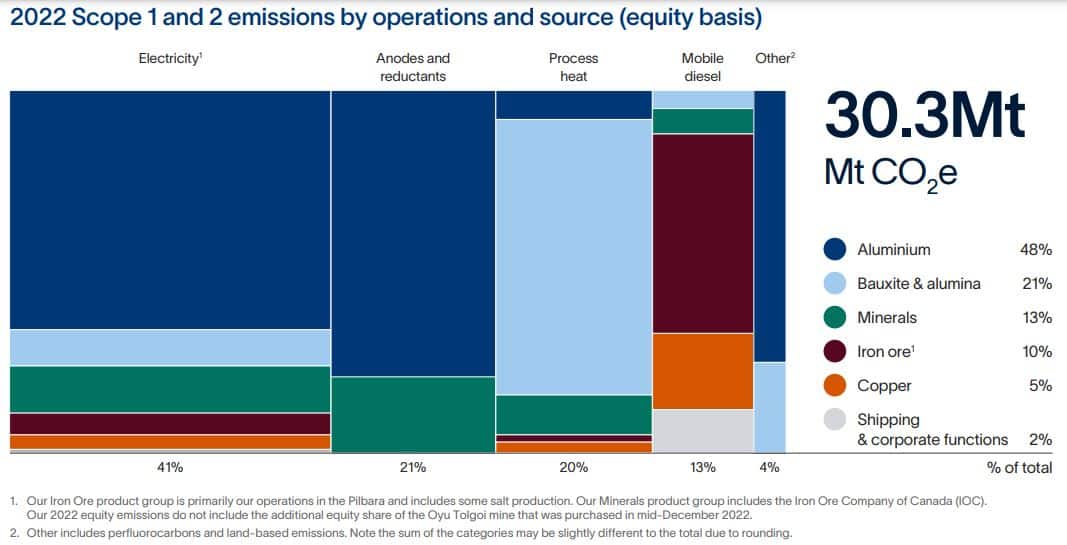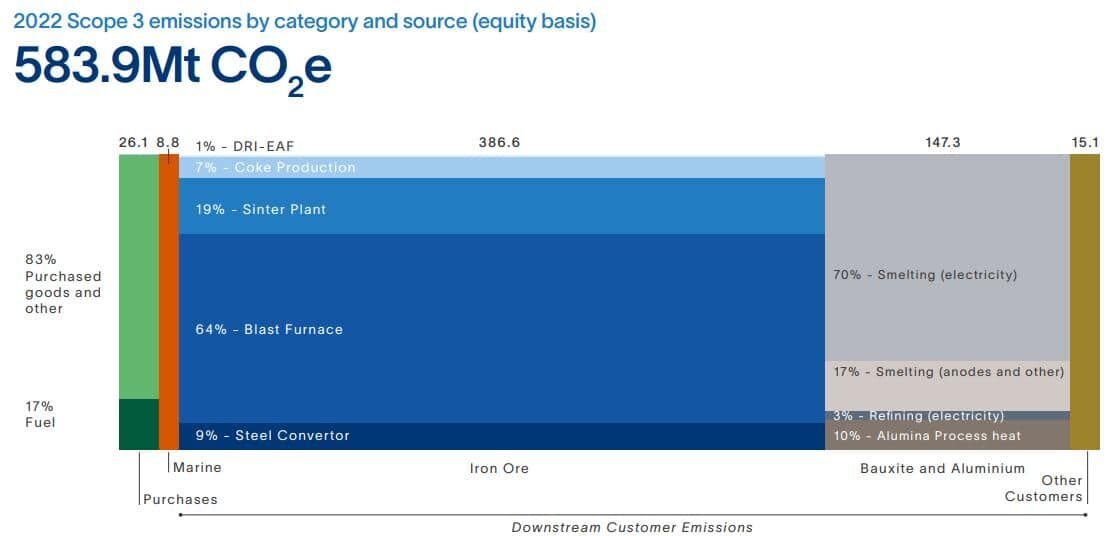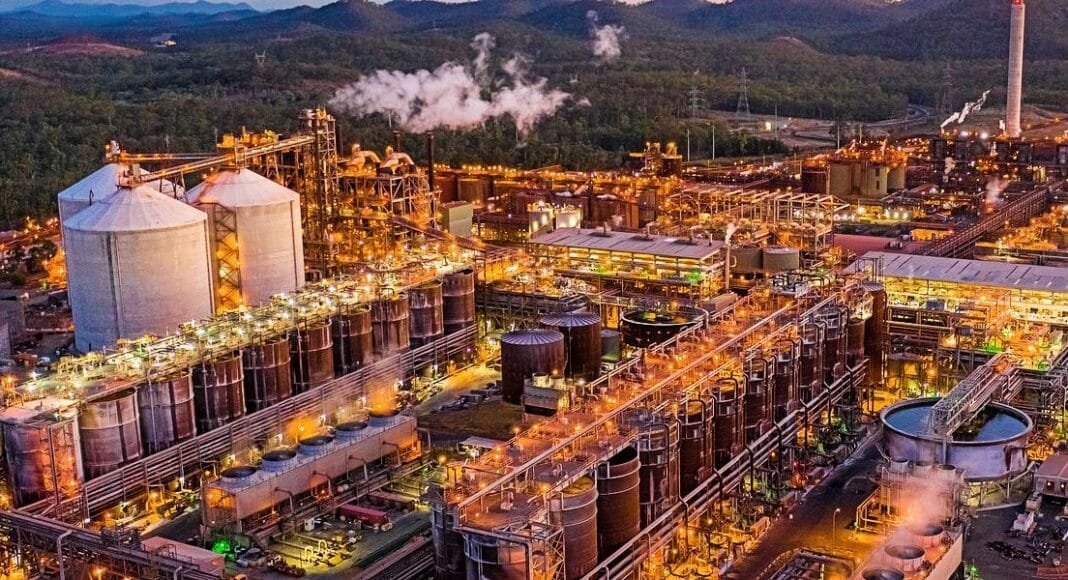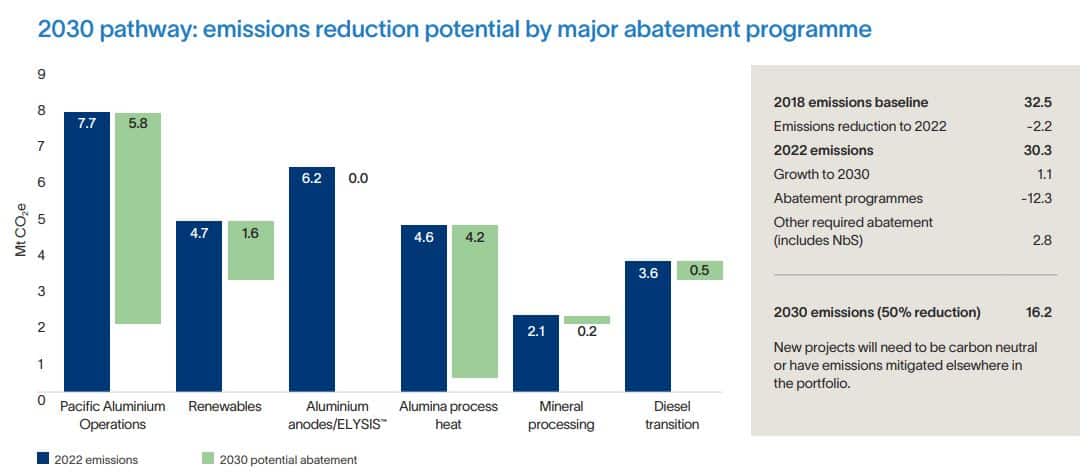The world’s second-largest miner – Rio Tinto – revealed that it won’t be able to reach its 2025 decarbonization target of 15% carbon emissions reduction. That’s unless it buys carbon credits to offset its emissions.
The mining giant had also made an $800 million “write down” on its Gladstone alumina refineries due to the higher costs of annual emissions cap under the Albanese government’s tougher “Safeguard Mechanism”.
Writing down or taking an impairment charge of its assets happens when a company’s projected cash flows are less than what the asset is currently accounted for in the books.
Rio Tinto didn’t expect and account for the impact of the imposed carbon tax on its long-term cash flow projections. Thus, the miner must change the projections that resulted in the $800 million reduction in its Australian alumina refineries asset.
This claim to miss its net zero targets is one of the first admitted by a mining giant, highlighting the struggles faced by heavy industries in abating their carbon emissions.
According to Rio Tinto’s CEO, Jakob Stausholm, achieving the 2025 climate target is hard because developing new solutions takes time. He specifically said that:
“There is a lot of technology that doesn’t exist and has to go through an R&D funnel, and that just takes a long time.”
Rio Tinto’s Carbon Emissions and Pathway
The miner aimed for net zero emissions by 2050, in alignment with the Paris Agreement. To reach this climate goal, the company sets a 15% reduction in direct and indirect emissions by 2025, and 50% by 2030, based on the 2018 baseline.
But Stausholm previously said that he regretted those targets while noting that reaching them calls for making tough choices.
Mining is responsible for only 20% of Rio Tinto’s carbon emissions. About 50% is from its Australian refineries, where the impairment charge comes from, as they’re energy-intensive and run by coal.
In 2022, the mining giant was able to cut Scope 1 and 2 emissions by 7% relative to 2018 levels. The reduction – from 33.7 – 30.3 Mt CO2 – was mainly due to employing large-scale renewable energy that powers its operations.


Rio Tinto also expects that its emissions will rise (1.5 Mt CO2) as production grows between 2023 and 2025. To help address this, and still reach its 2025 climate target, the miner developed a plan for abatement projects. These projects have a total of 4.2Mt CO2 abatement.
To reach its 2030 target, the mining giant has to employ these decarbonization levers:
- Switching to renewables
- Abating emissions from alumina refineries and minerals processing
In line with those strategies, Rio Tinto established the following specific abatement programs and their emissions reduction potential.
Carbon Credits Are Key in Rio’s Net Zero Goal
The other required abatement particularly includes investment in nature-based climate solutions (NbS). That means investing in high-integrity carbon offset credits, which according to the company play a greater role in their net zero pathway.
In fact, Stausholm said their 2025 goal will still be achievable through carbon credits as their “last resort”. Securing high-quality carbon credits is crucial for the miner to decarbonize their operations.
In particular, Rio Tinto’s ambition is to “build a sustainable and long-term carbon credit portfolio generating 1.7 million tonnes annually by 2030”.
The company will focus on investing in carbon credits in regions where they’ve significant emissions, including North America and Australia. They then plan to move upstream into co-development or co-financing of carbon offset projects for the long-term security of earning quality credits.
Delivering its net zero emissions strategy requires Rio Tinto to invest $7.5 billion in capital between 2022 and 2030. Out of that, about $1.5 billion will be needed over the period 2022 to 2025.
Last year, the miner’s decarbonization-related capital expenditure was just $94 million, far below their original estimate of $500 million. But decarbonization investment across the rest of the Rio Tinto Group will ramp up beyond 2025.
The company will continue to explore carbon capture and mineralization options leveraging its exploration and geological expertise. Carbon capture technologies, though emerging, have been the go-to solution for many heavy emitters.
Rio Tinto peers such as BHP and Fortescue Metals Group are so far on track to reaching their climate goals. BHP seeks to reduce Scope 1 and 2 emissions by 30% by 2030, while Fortescue aims to hit net zero emissions by the same year.
As governments’ carbon tax and other schemes become law, companies will be forced to account for these costs in their cash flow projections. And Rio Tinto is not the only company that will face this problem. Other heavy emitters in Australia, Canada, and Europe may expect to see this coming their way, too.


